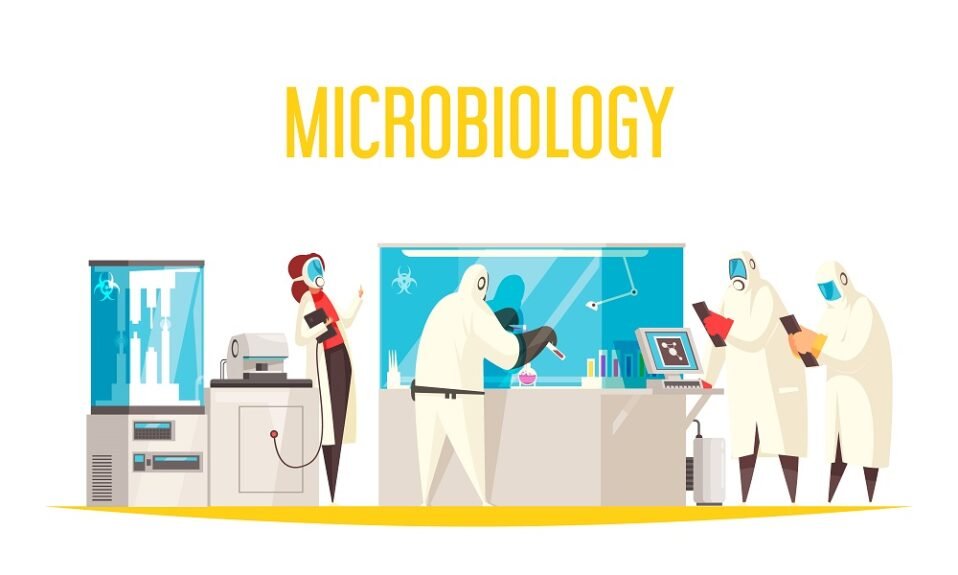1:Which of the following genera is most likely to contain organisms capable of surviving high temperatures?
(a) Vibrio
(b) Pseudomonas
(c) Torula
(d) Coxiella
Answer:(c) Torula
2: The major role of minor elements inside living organisms is to act as
(a) Co-factors of enzymes
(b) Building blocks of important amino acids
(c) Constituents of hormones
(d) Binder of cell structure
Answer:(a) Co-factors of enzymes
3:The apparatus used to ma inta in a continuous culture
(a) Chemostat
(b) Autostat
(c) Thermostat
(d) Both a and c
Answer:(a) Chemostat
4:The test used to detect the deamination of the amino acids by bacteria
(a) Nessler’s reagent test
(b) Proteolytic test
(c) Lactose test
(d) Rose indole reagent test
Answer:(a) Nessler’s reagent test
5:Diphtheria is caused by
(a) Corynebacterium
(b) Staphylococcus
(c) Streptococcus
(d) None of these
Answer:(a) Corynebacterium
6:Koplik spots observed in the mucous membrane is characteristic feature of the disease
(a) Rubella
(b) Measles
(c) Mumps
(d) Influenza
Answer:(c) Mumps
7:A bacterium containing prophage is called as
(a) Lytic
(b) Lysogen
(c) Lytogen
(d) None of these
Answer:(b) Lysogen
8: The most infectious food borne disease is
(a) Tetanus
(b) Dysentery
(c) Gas gangrene
(d) Botulism
Answer:(d) Botulism
9:An example for common air borne epidemic disease
(a) Influenza
(b) Typhoid
(c) Encephalitis
(d) Malaria
Answer:(a) Influenza
10:Viral genome can become integrated into the bacterial genomes are known as
(a) Prophage
(b) Temperate Phage
(c) Bacteriophage
(d) Metaphage
Answer:(b) Temperate Phage
11:Rancidity of stored foods is due to the activity of
(a) Toxigenic microbes
(b) Proteolytic microbes
(c) Saccharolytic microbes
(d) Lipolytic microbes
Answer:(d) Lipolytic microbes
12:Virion means
(a) Infectious virus particles
(b) Non-infectious particles
(c) Incomplete particles
(d) Defective virus particles
Answer:(c) Incomplete particles
13:Virulence of the microorganisms can be reduced by
(a) Attenuation
(b) A virulence
(c) Inactivation
(d) Freezing
Answer:(a) Attenuation
14:The test used for detection of typhoid fever
(a) WIDAL test
(b) ELISA
(c) Rose Waaler test
(d) Western Blotting
Answer:(a) WIDAL test
15:Bacteriophage capable of only lytic growth is called
(a) Temperate
(b) Avirulent
(c) Virulent
(d) None of these
Answer:(a) Temperate
16:Diphtheria bacillus is otherwise known as
(a) Fried-Landers bacillus
(b) Kleb’s hofflers bacillus
(c) Frchs bacillus
(d) Koch’s bacillus
Answer:(b) Kleb’s hofflers bacillus
17:Acridine dyes are more effective against
(a) Gram positive
(b) Gram negative
(c) Ricke Hsia
(d) Mycoplasma
Answer:(a) Gram positive
18:In bacteria pigment bearing structures are
(a) Chloroplast
(b) Protoplast
(c) Spheroplast
(d) Chromatophores
Answer:(d) Chromatophores
19:The procedure of differential staining of bacteria was developed by
(a) A.H. Gram
(b) H.C. Gram
(c) N.C. Gram
(d) H.A. Gram
Answer:(b) H.C. Gram
20:Intermediate group of pathogen between bacteria and viruses which are intracellular parasites are called
(a) Mycoplasmas
(b) Rickettsias
(c) Prions
(d) Virusoids
Answer:(b) Rickettsias
21:Bacillus is an example of
(a) Gram positive bacteria
(b) Gram negative bacteria
(c) Virus
(d) Viroid
Answer:(a) Gram positive bacteria
22:Amoebic dysentery in humans is caused by
(a) Plasmodium
(b) Paramecium
(c) Yeast
(d) Entamoeba histolytica
Answer:(d) Entamoeba histolytica
23:Viral genome that can become integrated into bacterial genome is called
(a) Prophage
(b) Temperate phage
(c) Bacteriophage
(d) Metaphage
Answer:(a) Prophage
24:Cytochromes are
(a) Oxygen acceptors
(b) ATP acceptors
(c) Electron acceptors
(d) Protein acceptors
Answer:(c) Electron acceptors
25:The cell ls having F plasmaid in the chromosomes were termed as
(a) Hfr
(b) F–
(c) Hbr
(d) C+
Answer:(a) Hfr
26:Recombination process occurring through the mediation of phages is
(a) Conjunction
(b) Transduction
(c) Transformation
(d) Transfection
Answer:(b) Transduction
27:Mordant used in grams staining is
(a) Crystal violet
(b) Iodine
(c) Safranin
(d) All of these
Answer:(b) Iodine
28:Parasitic form must contain
(a) Capsule
(b) Cell-wall
(c) Endospores
(d) Flagella
Answer:(b) Cell-wall
29: Gram staining is an example for
(a) Simple staining
(b) Differential staining
(c) Negative staining
(d) None of these
Answer:(d) None of these
30:Following Cocci are non-motile except
(a) Staphylococcus
(b) Meningococcus
(c) Gonococcus
(d) Rhodococcus agilis
Answer:(a) Staphylococcus




